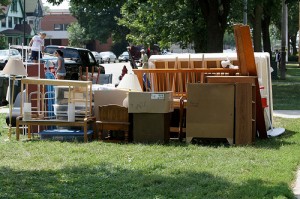Moving Out Tenants
Tenants move out. That’s a reality that every landlord and property manager faces. And when working with all types of tenants, it follows that you’ll have all kinds of move-out experiences—some good, some very bad. Here are a few things to look out for, and some procedures you might find helpful.
Preparing for Move-Out Day
You should really have started preparing for move-out day when your tenant moved in. If you were proactively communicating with your tenant from the start, you already completed a Check-In Sheet. Establishing the condition of the unit upon signing the lease, then using the same list to evaluate on move-out day, is a simple way to track any damage and appropriate charges.
Be Consistent
Maintaining clear communication and working from established procedures are two themes we visit often in this blog. If you have standard procedures and forms in place, every interaction with your tenants will be easier on both parties—and will keep you covered from a legal standpoint as well. Remember that you do not want to be seen as discriminating against any tenants, so you must require the same paperwork and notices from all.
Security Deposit Disputes
This is the number one problem in landlord tenant relationships. Many tenants have a fear of not receiving their security deposit back. If you’ve been inspecting the property on a regular basis, then your tenant has had ample opportunity to point out any problems that could affect their deposit. Still, your definition of “ordinary wear and tear” could vary greatly from your tenants’. Be fair, but firm, take reasonable deductions and provide a thorough accounting of the security deposit. Return the balance promptly, and comply with all local laws covering interest and time limits.
Written Notice
If your tenant mentions in passing or calls specifically to inform you they’re moving, let them know you require written notice. Remind them that the rental agreement states this clearly, and that you need to be sure all are in compliance with the lease and with the law. Provide them with a simple Tenant’s Notice to Vacate Rental Unit form, covering the property address, names, dates, reason for moving, and allowing you access to the unit to inspect and show the unit to prospective tenants or repair people. Do not allow the tenant to skip giving you notice in writing—it brings too many possibilities for problems!
Next post: In Tenants Moving Out, Part II, we’ll explore some additional suggested procedures, the Move-Out Inspection, and help define “ordinary wear and tear.”


Add A Comment
You must be logged in to post a comment.